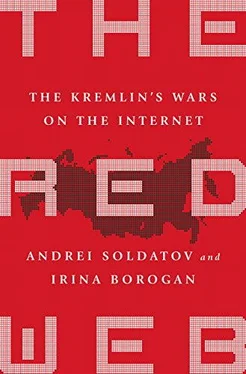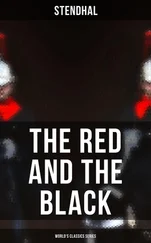Eventually they agreed to give a permit for thirty thousand for December 10 but insisted that the protest site be moved away from the Kremlin—it could not be as close as Revolution Square—and they offered Bolotnaya Square, not far away, but separated by the Moscow River from the Kremlin. Everybody agreed, and Parkhomenko took a photo of the document and posted it on his Facebook page around 10 p.m. on December 8.
Klishin immediately changed the location for the protest on Facebook.
In the months to come this decision was to be the constant source of confusion and mutual accusations. The most radical protesters argued that such a big demonstration didn’t need official approval, causing the protest to lose momentum when the leaders agreed to move the event to Bolotnaya, which was not so close to the Kremlin. The more moderate protesters were convinced that Muscovites were not ready for violent clashes with the police.
Bolotnaya Square is on an island. The Moscow River runs on one side, and a small canal on the other. The Kremlin is located across the river. On Saturday, December 10, more than fifty thousand people crowded onto the island. Nothing so large had been seen in Moscow since the dying days of the Soviet Union. Those who could not make it watched it live on TV Dozhd.
The protesters were the heart of the new Russian middle class, people who usually were found in the restaurants and cafés of Moscow but were now on the island with placards and slogans. The crowd was also sprinkled with the usual assortment of radical anarchists, journalists, and human rights campaigners who had attended demonstrations and marches over the years. But this time they were swallowed up in the mass of completely new faces, most of whom were attending a protest for the first time in their lives. Many of them held placards such as “Get our elections back” and “Putin must go.”
Lev Gershenzon, the head of Yandex News who had earlier stood up to Kremlin efforts and who brought his colleagues to the first protest after the fraudulent vote, took with him his seventeen-year-old daughter, Liza, who had with her a placard with big red words on a white sheet: “Give us back our voices,” it demanded.
The protest on Bolotnaya Square marked something completely new in Russian society. It was not political parties, trade unions, or charismatic leaders that drove Muscovites to demonstrate by the tens of thousands; those who went to Bolotnaya were not ready to support any political group or party. The crowd responded enthusiastically to popular thriller writer Boris Akunin who, in a speech, called only for the restitution of Muscovites’ right to elect their mayor and a rerun of the election in the capital.
The protesters were galvanized by anger over the election fraud, which had been exposed by new technologies on the web, and they were mobilized through social networks. In a country that was for centuries defined by hierarchical order, by a power vertical, it was remarkable to see citizens united by horizontal methods.
The protesters had also enthusiastically embraced a symbol: the white ribbon. It was originally proposed by a user on LiveJournal, Russia’s top blogging platform, and it went viral, with thousands taking it up—white ribbons appeared on user pics on users’ blogs and social media. Soon people took the white ribbon offline and began displaying them on their cars too.
This new experience also led to something very unusual for Russia: the protesters demanded transparency, which the Internet made possible. The activists posted the results of their talks with city officials immediately, and the organizing committee of the protests, formed after Bolotnaya, broadcasted its discussions online. The leaders reported all their moves—from choosing the new place for the next protest to collecting money—openly online. Navalny and Yashin were not at Bolotnaya because they were still sitting in jail, but crowds of people visited them every day, singing songs outside the police stations. Navalny’s charisma and optimism changed people’s attitudes to such detentions; it became almost fashionable among hipsters to be detained.
For Putin and Medvedev, the rally at Bolotnaya Square was just what they had feared—a mass protest just outside the walls of the Kremlin. And it was facilitated by Facebook and Twitter, technology made in the West.
Many protesters on Bolotnaya Square were puzzled by the sight of an unfamiliar aerial vehicle with propellers circling overhead—some even thought it might be a UFO. The mysterious device was a radio-controlled aircraft, manned by Stanislav Sedov, a thirty-five-year-old drone enthusiast and highway engineer by training. A few days before the protest he had suggested to a friend, Ilya Varlamov, a well-known blogger who founded an agency for citizen journalism called Ridus, that they try to film the crowd from a drone. They got unofficial permission to launch the drone with a camera. [21] Stanislav Sedov, interview with authors, July 2012. See also Andrei Soldatov and Irina Borogan, “Big Brother, Little Drones—Protestors Beware,” OpenDemocracy, July 23, 2012, www.opendemocracy.net/od-russia/andrei-soldatov-irina-borogan/big-brother-little-drones-protestors-beware .
How they secured this permission is not clear, but it was widely reported that Ridus was itself set up with the approval of the presidential administration. Perhaps the Kremlin wanted to get evidence of how few people went to protests.
On Bolotnaya, Sedov launched the little device from a protected police site. The police even chased away curious observers so they didn’t get in the way of the launch. When Sedov had his drone in the air, it became clear immediately that many more people had come to the demonstration than expected. The photographs became the very best evidence of the enormity of the crowd.
Almost immediately the pictures from the drone were posted online. The revolt of the wired was under way.
CHAPTER 8
Putin Strikes Back
The first attack came surging through the Internet on the evening of December 3, 2011, just before the parliamentary election. The target was LiveJournal, Russia’s top blogging platform. Along with Facebook, LiveJournal was the favorite place for protesters to find political news and discussion. With an austere and simple design, LiveJournal had been used widely by Russian bloggers and journalists, and it featured well-established figures with thousands of followers. When the attack came, Anton Nossik, who was media director at SUP Media (which owned LiveJournal), was in Moscow, monitoring the servers based in Nevada. They were hit with a distributed denial-of-service attack, or DDOS, in which a server is so overwhelmed by requests for access that it simply shuts down. The method is crude, like jamming a radio broadcast, but can be effective. At 8:12 p.m. Nossik wrote on his blog, “The pre-election DDOS-attack on LiveJournal continues. At this minute our servers are bombarded by dump requests with the speed of 12–15 Gbits per sec. The goal of the attacking is clear. It’s banal Soviet jamming, and it has the same task: to prevent the uncontrolled exchange of information.” [1] Nossik’s post, https://dolboeb.livejournal.com/2242130.html .
The next morning, on Sunday, December 4, beginning shortly after 6:30, the onslaught expanded to fourteen independent Russian news media outlets. Hackers went after websites of the radio station Echo Moskvy, the newspaper Kommersant , the news website Slon.ru, TV Dozhd, and, inevitably, Golos, the election monitor. The radio station’s servers remained offline for the entire day. [2] Andrei Soldatov and Irina Borogan, “The Kremlin and the Hackers: Partners in Crime?” OpenDemocracy, April 25, 2012, www.opendemocracy.net/od-russia/irina-borogan-andrei-soldatov/kremlin-and-hackers-partners-in-crime .
Читать дальше












